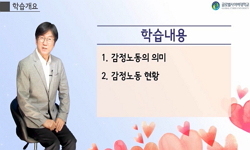본고는 한국 TV 드라마가 공통감각으로서 ‘슬픔’의 감정이 형성되고 이를 ‘눈물’이 수행해 간 방식을 탐색하기 위해 2000년대 초반의 한국 TV 드라마 <겨울연가>(2002), <발리에서 생...
http://chineseinput.net/에서 pinyin(병음)방식으로 중국어를 변환할 수 있습니다.
변환된 중국어를 복사하여 사용하시면 됩니다.
- 中文 을 입력하시려면 zhongwen을 입력하시고 space를누르시면됩니다.
- 北京 을 입력하시려면 beijing을 입력하시고 space를 누르시면 됩니다.

한국 TV 드라마의 공통감각으로서 ‘슬픔’ 형성과 ‘눈물’의 수행 방식 연구 = Study on the Method of Formation and Performance of ‘Sadness’ as the Common Sense and ‘Tears’ in Korean TV Drama.
한글로보기https://www.riss.kr/link?id=A109125518
-
저자
김소은 (숙명여자대학교 교양교육연구소)
- 발행기관
- 학술지명
- 권호사항
-
발행연도
2024
-
작성언어
Korean
-
주제어
주제어: TV 드라마 ; 슬픔 ; 공통감각 ; 감정 ; 눈물 ; 수행성 ; 이별 ; 멜로드라마,FACS ; PRATT ; NP 분류 모델 ; Key words: TV drama ; Sadness ; Common Sense ; Feeling ; Tears ; Performity ; Farewell ; Melo-Drama ; FACS ; Pratt ; NP Classification Model
-
등재정보
KCI등재
-
자료형태
학술저널
-
수록면
155-210(56쪽)
- DOI식별코드
- 제공처
-
0
상세조회 -
0
다운로드
부가정보
국문 초록 (Abstract)
이를 구체적으로 살펴 보기 위해, 내러티브, 장면의 영상 구성, 배우의 연기 패턴, O.S.T.를 분석하기 위해 FACS, NP 분류 모델, PRATT 등의 기제들을 방법적 도구로 삼는다. 그 결과 ‘슬픔’을 발생시키는 요인이 질병 및 죽음으로서 공통적으로 드러났고 이는 인물들이 처한 가족, 미혼모, 입양, 폭력, 가난 등의 시대가 당면한 사회 문제들과 연관하고 있는 사실을 살펴보았다. ‘슬픔’은 이러한 과정에서 새로운 시대의 공통감각으로서 형성되면서 ‘눈물’을 통해 무력감과 애상감을 표출하고 시대의 문제들을 감각화 한다.
이에 따라 ‘슬픔’의 수행 기제로서 ‘눈물’은 눈물 흘리기를 통해 하나의 에토스로서 ‘슬픔’을 마음의 레짐으로 기능하게 하면서 개인과 사회를 결속시킨다. 그리고 ‘슬픔’은 공동의 삶에 도움을 주며 새로운 사회를 향한 태세의 전략으로 작동하려 한다. 감정 발생의 장(場)이자 시대를 통어하는 공통감각으로서 ‘슬픔’은 시청-수용자에게 영향을 끼치면서 개인 및 사회·문화의 정체성 형성과 관련한다. ‘슬픔’의 감정은 세계에 대한 태도이자 현실 대응 태세이기 때문이다.
본고는 한국 TV 드라마가 공통감각으로서 ‘슬픔’의 감정이 형성되고 이를 ‘눈물’이 수행해 간 방식을 탐색하기 위해 2000년대 초반의 한국 TV 드라마 <겨울연가>(2002), <발리에서 생긴 일>(2004), <천국의 계단(2004), <미안하다 사랑한다>(2004)을 분석 대상으로 삼아 ‘눈물’을 흘리게 하는 동인을 찾아 ‘슬픔’을 발생시키는 요인들을 탐색하고자 한다.
이를 구체적으로 살펴 보기 위해, 내러티브, 장면의 영상 구성, 배우의 연기 패턴, O.S.T.를 분석하기 위해 FACS, NP 분류 모델, PRATT 등의 기제들을 방법적 도구로 삼는다. 그 결과 ‘슬픔’을 발생시키는 요인이 질병 및 죽음으로서 공통적으로 드러났고 이는 인물들이 처한 가족, 미혼모, 입양, 폭력, 가난 등의 시대가 당면한 사회 문제들과 연관하고 있는 사실을 살펴보았다. ‘슬픔’은 이러한 과정에서 새로운 시대의 공통감각으로서 형성되면서 ‘눈물’을 통해 무력감과 애상감을 표출하고 시대의 문제들을 감각화 한다.
이에 따라 ‘슬픔’의 수행 기제로서 ‘눈물’은 눈물 흘리기를 통해 하나의 에토스로서 ‘슬픔’을 마음의 레짐으로 기능하게 하면서 개인과 사회를 결속시킨다. 그리고 ‘슬픔’은 공동의 삶에 도움을 주며 새로운 사회를 향한 태세의 전략으로 작동하려 한다. 감정 발생의 장(場)이자 시대를 통어하는 공통감각으로서 ‘슬픔’은 시청-수용자에게 영향을 끼치면서 개인 및 사회·문화의 정체성 형성과 관련한다. ‘슬픔’의 감정은 세계에 대한 태도이자 현실 대응 태세이기 때문이다.
다국어 초록 (Multilingual Abstract)
In order to examine this in detail, we use mechanisms such as FACS, NP classification model, and Pratt as methodological tools to analyze narrative, scene composition, actor’s acting pattern, and O.S.T., As a result, it was found that the causes of sadness were common diseases and deaths, and this was related to the social problems faced by the times such as family, single mother,adoption, violence, and poverty.,In this process,‘Sadness’is formed as a common sense of a new era, expressing helplessness and sorrow through‘Tears’and sensualizing the problems of the times.
As a result, tears as a performance mechanism of the sorrow, as a ethos through the shedding of tears as a regime of the mind, binds the individual and society., And grief seeks to serve as a strategy of poise for a new society, helping the common life., As a place of emotion generation and a common sense throughout the age, sadness affects the audience and audience and relates to the formation of personal, social, and cultural identity. Sadness is an attitude toward the world and a response to reality.
The purpose of this study is to explore the factors that cause sadness by searching for the drivers who shed tears by analyzing Korean TV dramas <Winter Sonata>(2002), <What Happened in Bali>(2004), <Stairway to Heaven>(2004), and &l...
The purpose of this study is to explore the factors that cause sadness by searching for the drivers who shed tears by analyzing Korean TV dramas <Winter Sonata>(2002), <What Happened in Bali>(2004), <Stairway to Heaven>(2004), and <I'm Sorry, I Love You>(2004) in the early 2000s in order to explore the way in which Korean TV dramas formed emotions of sadness as a common sense and performed them.
In order to examine this in detail, we use mechanisms such as FACS, NP classification model, and Pratt as methodological tools to analyze narrative, scene composition, actor’s acting pattern, and O.S.T., As a result, it was found that the causes of sadness were common diseases and deaths, and this was related to the social problems faced by the times such as family, single mother,adoption, violence, and poverty.,In this process,‘Sadness’is formed as a common sense of a new era, expressing helplessness and sorrow through‘Tears’and sensualizing the problems of the times.
As a result, tears as a performance mechanism of the sorrow, as a ethos through the shedding of tears as a regime of the mind, binds the individual and society., And grief seeks to serve as a strategy of poise for a new society, helping the common life., As a place of emotion generation and a common sense throughout the age, sadness affects the audience and audience and relates to the formation of personal, social, and cultural identity. Sadness is an attitude toward the world and a response to reality.
동일학술지(권/호) 다른 논문
-
- 한국드라마학회
- 문선영
- 2024
- KCI등재
-
- 한국드라마학회
- 이은구
- 2024
- KCI등재
-
예술가의 말의 기능과 ‘아티스트 토크’ 프로그램의 역할
- 한국드라마학회
- 서지영
- 2024
- KCI등재
-
한국형 SF가 구현한 포스트휴머니즘과 페미니즘 : <고요의 바다>(2021), <정이>(2023)를 중심으로
- 한국드라마학회
- 전지니
- 2024
- KCI등재




 KCI
KCI KISS
KISS






